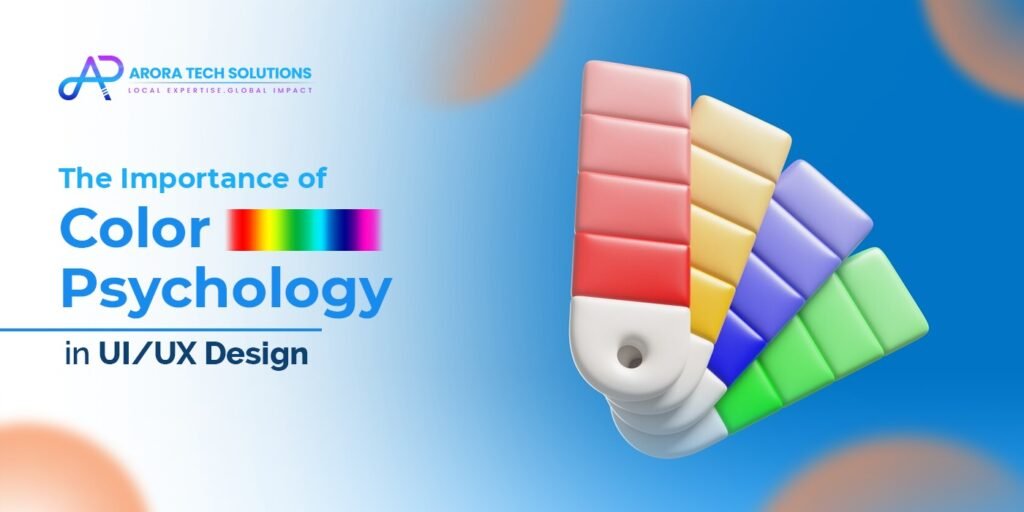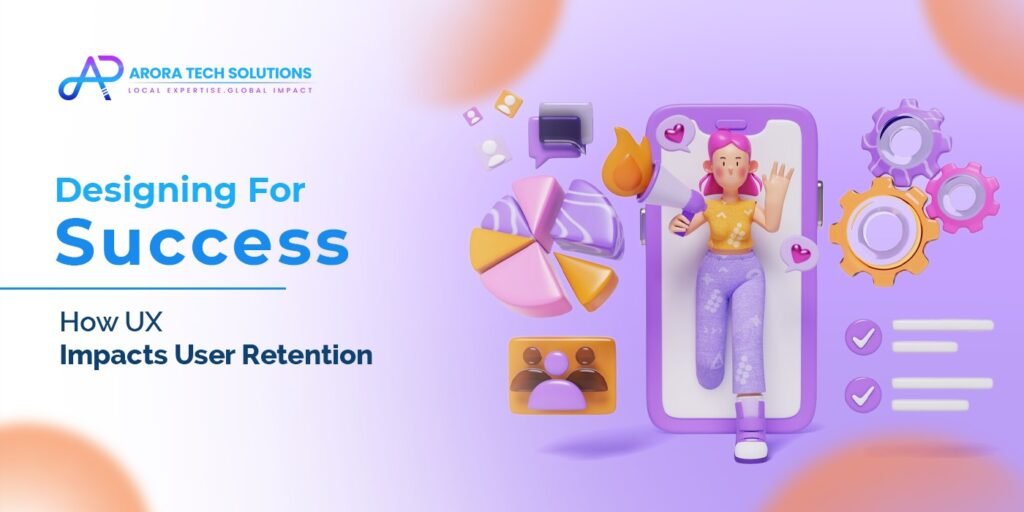The Importance of Color Psychology in UI/UX Design
The Importance of Color Psychology in UI/UX Design
Color is more than just an aesthetic choice in UI/UX design; it’s a powerful tool that can influence how users interact with a digital product. Whether it’s the calming blue of a bank’s website or the energetic red of a retail app, the colors used in your design can impact everything from user emotions to conversion rates. Understanding color psychology in design is essential for creating a user experience that resonates with your audience and enhances usability. In this blog, we’ll explore the significance of color psychology in UI/UX design and how it can affect user behavior and perception.
What is Color Psychology in Design?
Color psychology is the study of how colors affect human behavior, emotions, and decision-making. In UI/UX design, color is more than just a decorative element; it plays a critical role in shaping the mood and tone of an interface. Different colors can evoke different feelings and reactions, influencing how users perceive a brand, navigate an interface, and interact with various elements.
Incorporating color psychology into your UI/UX design can improve usability, enhance user engagement, and lead to better conversion rates.

How Color Affects User Perception and Behavior
Colors have the ability to create emotional connections and trigger specific behaviors. Here’s a look at how different colors are perceived and how they can influence user experience:
1. Red: Energy and Urgency
Red is an attention-grabbing color that often signifies energy, excitement, and urgency. It can evoke strong emotions and stimulate action. In UI/UX design, red is commonly used for call-to-action buttons, like “Buy Now” or “Subscribe,” as it encourages immediate response.
- When to use it: Red is effective when you want to create a sense of urgency or excitement. It’s ideal for sales pages, discount promotions, or time-sensitive offers.
- Potential drawbacks: Overusing red can cause users to feel overwhelmed or stressed, so it should be used sparingly or in combination with calmer colors.
2. Blue: Trust and Calm
Blue is often associated with trust, calm, and professionalism. It’s a color that promotes feelings of safety and security, which is why it’s commonly used by financial institutions, healthcare providers, and corporate websites. Blue evokes a sense of reliability and competence, making it ideal for industries that require trust.
- When to use it: Blue works well for companies in industries like finance, technology, and healthcare where trust is a top priority. It’s also great for creating a calm and clear interface.
- Potential drawbacks: While blue promotes trust, it can feel cold or distant if overused. Balancing it with warmer tones can create a more inviting atmosphere.
3. Green: Growth and Health
Green is widely associated with growth, health, and nature. It’s a soothing color that encourages feelings of relaxation and well-being. In design, green is often used by environmental organizations, health apps, and businesses that focus on sustainability.
- When to use it: Green is ideal for brands in the wellness, eco-friendly, and organic industries. It works well for promoting a sense of balance and health.
- Potential drawbacks: Depending on the shade, green can also be associated with envy or inexperience, so be mindful of the tone of green you choose.
4. Yellow: Optimism and Attention
Yellow is a bright and energetic color that signifies optimism, happiness, and creativity. It draws attention without being as aggressive as red. In design, yellow is often used to highlight key elements or draw users’ attention to important features like promotions, discounts, or buttons.
- When to use it: Yellow is perfect for creating a sense of positivity and attracting attention to specific areas of the interface. It’s also great for brands that want to convey creativity and enthusiasm.
- Potential drawbacks: Too much yellow can be overwhelming and can cause eye strain. It’s best used as an accent color rather than the primary one.
5. Purple: Luxury and Creativity
Purple is traditionally associated with luxury, royalty, and creativity. It’s a color that conveys a sense of sophistication and originality, making it a popular choice for high-end brands or creative industries.
- When to use it: Purple is great for products or services that are positioned as premium or exclusive. It’s also useful in industries like fashion, beauty, or arts and entertainment.
- Potential drawbacks: Overuse of purple can make an interface feel overly ornate or excessive, so it’s important to balance it with more neutral tones.
6. Black: Elegance and Authority
Black is a powerful color associated with elegance, authority, and sophistication. It’s often used by luxury brands or high-end tech companies to evoke professionalism and exclusivity. In design, black can create a modern, sleek aesthetic that emphasizes strength and sophistication.
- When to use it: Black works well in minimalistic or premium designs, where simplicity and elegance are key. It’s ideal for tech products, fashion brands, and premium services.
- Potential drawbacks: Too much black can make a design feel heavy or too stark. It’s best used in moderation or in combination with other colors for contrast.
7. Orange: Enthusiasm and Fun
Orange is a warm and inviting color that signifies enthusiasm, energy, and fun. It’s a great color for brands that want to appear friendly and approachable while still conveying a sense of excitement.
- When to use it: Orange is effective for call-to-action buttons, promotions, or events that require a sense of urgency but want to avoid the aggressiveness of red. It’s great for e-commerce, entertainment, and tech companies.
- Potential drawbacks: Orange can sometimes be perceived as a less professional color, so it may not be ideal for industries like finance or law.
Choosing the Right Color Palette for Your UI/UX Design
The key to successfully using color psychology in UI/UX design is creating a harmonious and effective color palette that aligns with your brand’s identity and user needs. Here are a few tips to help you choose the right color scheme:
- Understand Your Brand: The colors you choose should reflect your brand’s personality and values. For example, a tech startup might favor blue or green, while a creative agency may opt for bolder colors like yellow or purple.
- Consider Your Audience: Different colors may evoke different reactions based on cultural and personal associations. Make sure the colors you choose resonate with your target demographic.
- Use Contrast for Accessibility: Ensure there’s sufficient contrast between text and background colors for readability, especially for users with visual impairments.
- Test and Iterate: Don’t be afraid to test different color combinations to see how they perform with your users. A/B testing can help you determine the best color choices for engagement and conversion.
Conclusion
Color psychology plays a vital role in UI/UX design by influencing user emotions, behaviors, and perceptions. By understanding how different colors affect users, designers can create more effective and engaging interfaces that align with brand identity and enhance user experience. Whether you’re looking to build trust, evoke excitement, or promote relaxation, the right color choices can significantly impact how users interact with your product. By thoughtfully applying color psychology, you can create designs that not only look good but also drive user engagement, retention, and ultimately, business success.


